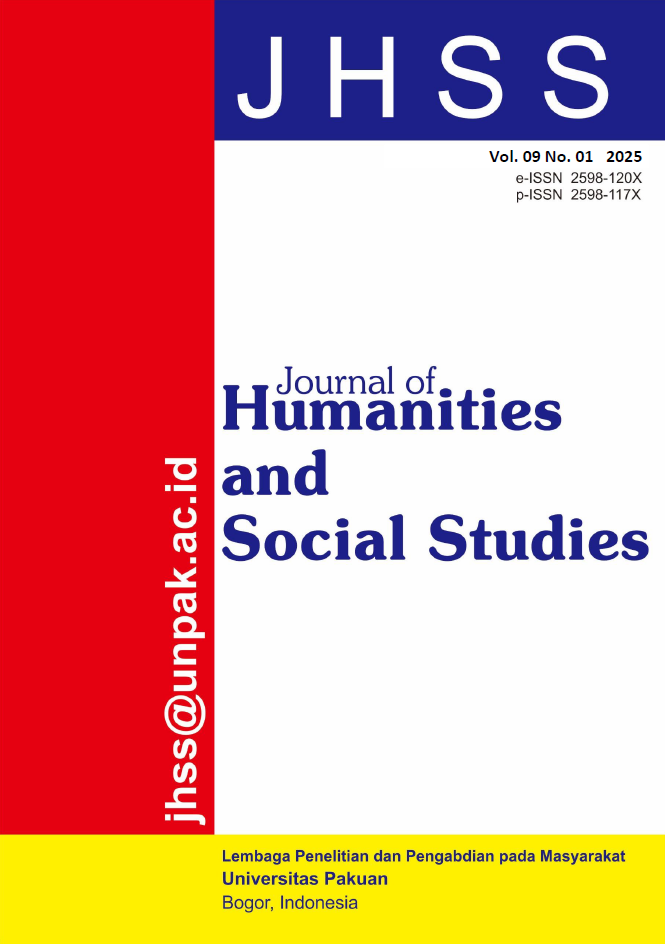Success Rate Padat Karya Paving Geprek Program’s For Poor Families In Surabaya City
DOI:
https://doi.org/10.33751/jhss.v9i1.75Keywords:
poverty; unemployment; success rate; Padat Karya Paving GePREK; poor familiesAbstract
The impacts of Pandemi Covid-19 such as poverty and unemployment. However, the number of poor people and the unemployment rate in the city of Surabaya decreases every year. This means that the Surabaya City Government has attempted to provide a solution by establishing community empowerment programs such as labor-intensive programs for poor families. One example is Padat Karya Paving GePREK (Mutual Cooperation, Empowerment and Community Economy). This program has been implemented in 10 sub-districts out of 31 sub-districts in the city of Surabaya. Therefore, this research aims to measure the success of the Padat Karya Paving GePREK for Poor Families in the City of Surabaya using a quantitative method with a descriptive approach of one variable, namely the success of the program is measured by indicators of the objectives of the padat karya in accordance with Surabaya Mayor Regulation Number 83 of 2023 concerning Padat Karya Programs in the City of Surabaya. Data was obtained through questionnaires, interviews and documentation. This research consisted of 79 respondents. The research results, this program was considered successful in achieving program objectives with a percentage of 63%.
References
World Health Organization, “WHO Director-General’s opening remarks at the media briefing on COVID-19 - 11 March 2020.” [Online]. Available :
M. Fikri Amrullah, H. Hendra, and A. Info, “Pandemi Covid-19: Ekonomi Dan Kemiskinan Kota Surabaya,” UNM Geographic Journal UNM Geog. J, vol. 6, no. 1, pp. 16–26, 2023, doi: 10.26858/ugj.vXiX.XXXX.
Badan Pusat Statistik Provinsi Jawa Timur, “Jumlah Penduduk Miskin menurut Kabupaten/Kota di Jawa Timur (Ribu Jiwa).” [Online].
Pemerintah Kota Surabaya, “Wali Kota Eri Cahyadi Canangkan Tanggal 25 Maret Hari Padat Karya.”
Pemerintah Kota Surabaya, “Peraturan Walikota Surabaya No 83 Tahun 2023 tentang Program Padat Karya di Kota Surabaya,” Surabaya, 2023.
Pemerintah Kota Surabaya, “Peraturan Daerah Kota Surabaya No 4 Tahun 2021 tentang RPJMD Tahun 2021-2026,” 2021.
F. Winandri Hapsari and L. Arif, “Pemberdayaan Masyarakat Miskin Melalui Program Rumah Padat Karya,” Societas: Jurnal Ilmu Administrasi dan Sosial, vol. 12, no. 2, pp. 2354–7693, 2023,
A. Mutiara Putricia and A. Prathama, “NeoRespublica : Jurnal Ilmu Pemerintahan Pemberdayaan Masyarakat Melalui Program Rumah Padat Karya Viaduct by Gubeng di Kota Surabaya,” Neorespublica, vol. 5, no. 1, pp. 95–110, 2023, doi: 10.52423/neores.v5i1.114.
D. Mutiarin and A. Zaenuddin, Manajemen Birokrasi dan Kebijakan (Penulusuran Konsep dan Teori). Yogyakarts: Pustaka Belajar, 2021.
W. W. Sujarweni, Metodologi Penelitian . PUSTAKABARUPRESS, 2022.
M. Abdullah, Metodologi Penelitian Kuantitatif. Yogyakarta: Aswaja Pressindo, 2015.
R. Mulyawan, Masyarakat, Wilayah dan Pembangunan. UNPAD PRESS, 2016.
Menteri Dalam Negeri Repubik Indonesia, “Peraturan Menteri Dalam Negeri Republik Indonesia No 59 Tahun 2021 tentang Penerapan Standar Pelayanan Minimal,” 2021.
Pemerintah Kota Surabaya, “Peraturan Walikota Surabaya No 138 Tahun 2023 tentang Rencana Aksi Penerapan Standar Pelayanan Minimal di Kota Surabaya Tahun 2024-2025,” 2023.
G. A. Permani, “Analisis Hubungan Program Padat Karya terhadap Penyerapan Tenaga Kerja di Kota Magelang Tahun 2013-2017,” Universitas Tidar , Magelang , 2019.
Downloads
Published
How to Cite
Issue
Section
License

This work is licensed under a Creative Commons Attribution-NonCommercial-ShareAlike 4.0 International License.














